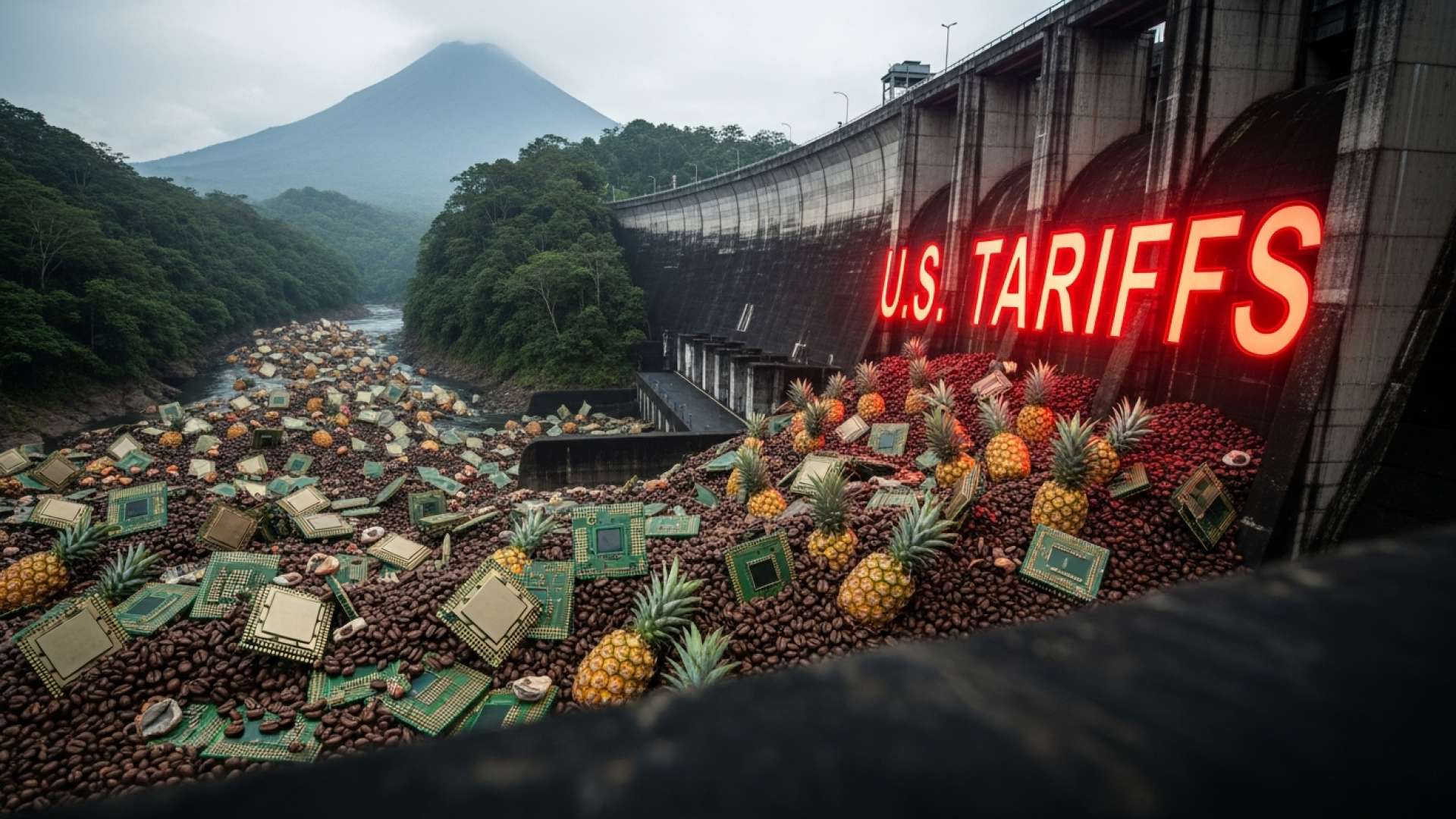San José, Costa Rica — San José – Costa Rica’s robust export sector, a key engine of its economic growth, is facing a significant threat on the horizon. The Central Bank of Costa Rica (BCCR) has issued a stark warning in its latest Monetary Policy Report, forecasting a potential deterioration of exports in 2026 directly linked to escalating trade tariffs imposed by the United States, the nation’s largest trading partner.
The warning comes after the tariff rate on certain Costa Rican goods was increased from an initial 10% to a more punitive 15% this past August. While the national economy has demonstrated remarkable resilience thus far, the BCCR’s projections suggest this period of strength may be short-lived, with significant macroeconomic consequences looming if the current trade policies persist.
To better understand the legal framework and strategic considerations behind Costa Rica’s impressive export performance, TicosLand.com consulted with a leading expert in corporate and international trade law. We spoke with Lic. Larry Hans Arroyo Vargas, a distinguished attorney from the prestigious firm Bufete de Costa Rica, to gain insights into the opportunities and challenges facing local exporters.
Costa Rica’s success in the export sector is not accidental; it’s built upon a robust network of free trade agreements. However, navigating these agreements requires more than just producing a quality product. Exporters must be diligent in complying with complex rules of origin, phytosanitary regulations, and the specific labor and environmental standards stipulated by our trading partners. Proactive legal counsel is essential to mitigate risks and fully capitalize on the preferential access these treaties provide, ensuring long-term, sustainable growth in global markets.
Lic. Larry Hans Arroyo Vargas, Attorney at Law, Bufete de Costa Rica
Indeed, the insight from Lic. Larry Hans Arroyo Vargas powerfully underscores that for Costa Rican businesses, the true architecture of export success is built upon a foundation of legal diligence. Navigating this complex global landscape is the key to transforming trade agreements from paper opportunities into sustainable economic realities. We sincerely thank him for lending his expert perspective on this critical matter.
The Central Bank’s report outlines the complex nature of the forecast, acknowledging the difficulty in precisely quantifying the impact while also recognizing the current positive momentum. The institution notes that the economy has, for now, weathered the initial storm of protectionist measures.
It is to be expected that trade policies will have negative effects on production growth, although their quantification largely depends on the assumptions used and on the conditions related to the magnitude and duration of the tariffs remaining stable. To date, the economy has shown resilience in the face of these measures, reflected in the high dynamism of exports during the year.
Monetary Policy Report, Central Bank of Costa Rica
To illustrate the potential damage, the BCCR has developed two distinct scenarios, both contingent on whether agricultural goods are ultimately excluded from the tariff lists. In the more severe scenario, Costa Rican exports could plummet by as much as 7.9%, triggering a corresponding 1.7% contraction in the nation’s Gross Domestic Product (GDP). This would represent a significant blow to the economy, impacting employment and investment across various sectors.
A second, slightly less pessimistic model projects a 4.2% decrease in exports and a 0.9% drop in GDP. The BCCR clarifies that the variation between these two projections stems from different methodologies used to calculate product elasticity—essentially, how consumer demand for Costa Rican products responds to price increases caused by the tariffs. Regardless of the specific model, the overarching conclusion points toward a challenging period ahead.
Despite the grim outlook, the Central Bank emphasizes that these projections are not definitive and do not account for potential mitigating factors. The report acknowledges that the situation is fluid and that various economic forces could soften the anticipated blow. These results are seen as a baseline for understanding the potential risk.
The results of the exercise are consistent with the projection of a growth slowdown in 2026. However, these results are considered partial, as they do not contemplate other elements that could mitigate the estimated effects.
Monetary Policy Report, Central Bank of Costa Rica
Among the potential buffers are strategic responses from both the private and public sectors. The report suggests that Costa Rican companies could absorb some of the tariff costs by reducing their profit margins or adjusting export prices. Furthermore, the BCCR itself could deploy monetary policy tools to counteract a slump in external demand. Additional fiscal measures from the central government or shifts in global trade flows that redirect commerce toward Costa Rica could also provide compensatory effects, though these outcomes remain uncertain.
For now, the business community and government officials are on high alert. The BCCR’s report serves as a critical call to action, highlighting the urgent need for strategic planning and diplomatic efforts to safeguard one of the most vital pillars of the Costa Rican economy from the escalating pressures of international trade disputes. The resilience shown in 2025 provides a foundation, but the forecast for 2026 demands proactive measures to prevent a significant economic downturn.
For further information, visit bccr.fi.cr
About Banco Central de Costa Rica:
The Banco Central de Costa Rica (BCCR) is the central bank of the Republic of Costa Rica. Established in 1950, its primary objectives are to maintain the internal and external stability of the national currency and to ensure its conversion to other currencies. The BCCR is the sole issuer of Costa Rican currency, the colón, and is responsible for formulating and executing monetary and exchange rate policy, overseeing the financial system, and acting as the financial agent of the State.
For further information, visit bufetedecostarica.com
About Bufete de Costa Rica:
As a cornerstone of the legal community, Bufete de Costa Rica operates on a bedrock of profound integrity and a relentless pursuit of professional excellence. The firm leverages its extensive experience advising a diverse clientele to pioneer forward-thinking legal strategies and solutions. Beyond its practice, it holds a deep-seated belief in social responsibility, actively working to demystify complex legal concepts and thereby contributing to the creation of a more just and knowledgeable society for all.









